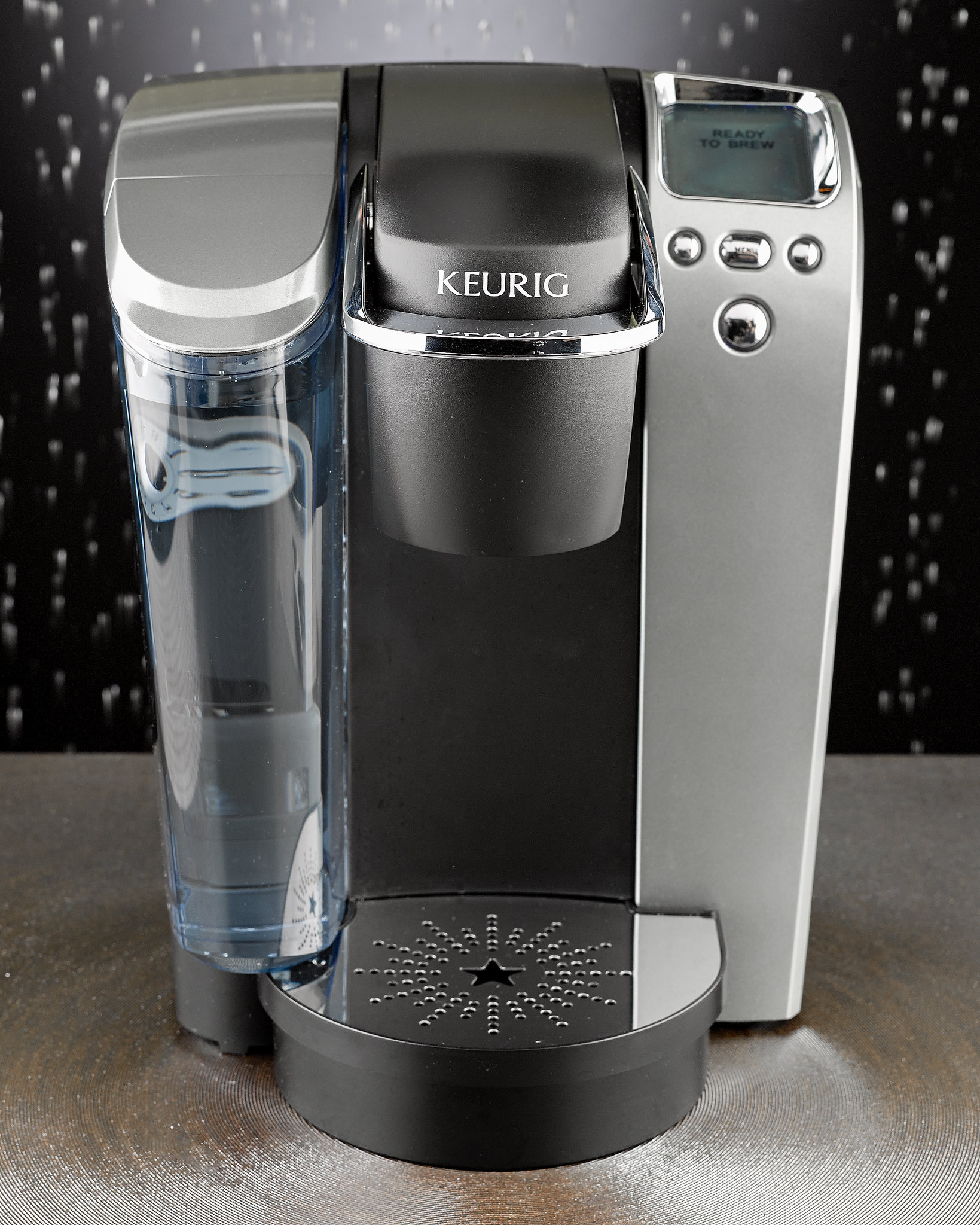How To Clean Keurig With Citric Acid
Little Coffee Place is reader-supported. When you buy through links on our site, we may earn an affiliate commission.
How Do You Descale A Keurig – Easy Way To Clean!

"Descaling" is probably the most misunderstood and surprising term that is heard when talking about Keurig coffee machines, or any coffee making equipment in general. Descaling is not something most users of these machines expect to know and do, regularly. Yet it is necessary maintenance for any owner of a Keurig machine.
It is important to know what descaling is for and how it is done. This will prolong the life of your machine and keep the brewed coffee as great as you first bought it.
Descaling is needed to remove limescale. What's limescale? It's mostly calcium carbonate, more commonly called calcium, that builds up over time. As hot water flows through the internal pipes of your Keurig machine the calcium can potentially clog it.
By heating and cooling down the water needed to brew coffee, the calcium carbonate that is naturally present in all waters, slowly precipitates.
Meaning, it is no longer dissolved in the water, but it starts covering the pipes and water reservoir of the Keurig machine.
Much like bad cholesterol can clog up your arteries. How quickly this process happens depends on how "hard" your water is, meaning how many solid components it contains. The harder it is, the quicker the limescale will start collecting in your Keurig machine.
Unlike with cholesterol and our arteries, it is possible to remove the limescale from the Keurig machines by descaling it.
Descaling it is simply using a chemical solution that is capable of dissolving the limescale back into the water, and flushing it along it. This way the Keurig machine can be cleaned back to its original state. Prolonging its life and assuring that the coffee won't contain any tiny particles of limescale, creating a bad tasting cup of coffee.
How to Descale
So, how does descaling actually work?
Keurig has an official method to do so. It involves using one of the Keurig descaling solutions available and pouring it all in the water reservoir of your machine.
Our Favorite Coffee

LifeBoost is a health and environmentally conscious coffee brand that sells all organic low acid coffee, and it is our teams go to coffee! They also offer our readers 50% off for all first time customers. So give it a try, and see why it's our go-to!
Make sure that the water filter is removed first. Then use a large mug or a bowl, put it under the spout, and press the brew button without inserting a K-cup into the machine.
Once all the water mixed with the descaling solution has run through the machine, the process of descaling a Keurig machine can be considered complete. Now put fresh water in the reservoir, and run a few brewing cycles. This is to rinse the machine of any remaining descaling solution or bad odor, and your Keurig is ready to brew coffee again.
In cases where there's a lot of limescale in the Keurig or it's been quite a while since you last descaled it, it is advised to perform a more thorough cleaning.
Take apart all the removable parts of your Keurig machine, like the water reservoir, the drip tray and the pod assembly. With warm water and dish soap, clean each part separately. Make sure to have the machine completely unplugged from the electrical socket first!
Help yourself with a paperclip to scratch the tiny holes of the Keurig machine. Over time, remains of coffee, solids or oils, can accumulate over the interior walls of the machine, influencing the taste of the coffee.
Try to get rid of as many of them as possible. Use hot water where possible, with or without dish soap (vinegar is an alternative, less chemical but possibly more smelly).
Then reassemble the machine and start the descaling process as above. With an official descaling solution, you usually can use it all with a full water reservoir. With vinegar the ratio is 1 part vinegar and 1 part water. Citric acid can be used too, with a ratio much more in favor of the acid: 20 parts of it to 1 part of water.
Whatever descaling agent you're using, make sure to run all the water through the Keurig machine to complete the descaling. Then rinse with fresh water for as long as it is needed for clear, odorless water to come out of the Keurig machine.
Descaling Solutions to Use
On the market various alternatives to the official descaling solutions suggested by Keurig are available. Vinegar and citric acid are the easiest to find, and natural. One is commonly used to clean surfaces, rust and unclog tubes for centuries. While citric acid is naturally present in citrus fruits like lemons and limes.
Natural descaling agents like these may be preferred by some as they are less aggressive than industrial alternatives but they tend to leave a strong odor behind. A thorough rinsing afterwards is necessary with citric acid and vinegar to not taste it in the coffee.
Industrial descaling agents are generally sold by machine vendors and are devised to work well with their machines. They may or may not be too aggressive when used with other machines, so be warned. Do follow the ratio that is advised by the producer on the bottle if you use an industrial descaling solution.
Keeping Keurig Clean
Outside of the proper descaling, keeping your Keurig machine clean is essential to make sure it works as well as possible and will last you many years. Regular maintenance should be kept.
Ideally, take all the removable parts of your Keurig and wash them thoroughly with warm water and dish soap. Make sure to rinse them, to not leave any trace of soap. Also, once a month, you should clean the needle. Next flush a whole water reservoir without any K-cups, to clean the inside of the Keurig machine of any solids beside the limescale.
Then, according to how hard your water is, descale your Keurig machine every 3 months or so. Those living in areas with very hard water may need to descale somewhat more often than this, maybe once every 2 months. While those who have soft tap water or use to filter it, may descale up to once every 6 months.
It's not advisable to descale less than a couple of times per year. Letting limescale accumulate may mean that it won't be fully removed at the next descaling process. Slowly it will build up inside your Keurig machine, damaging it.
Tips and Tricks
To prolong the most its life, make sure to follow the most conservative descaling schedule possible. Use filtered water if you have hard tap water, or mineral water that is rich in minerals (it's usually specified on the label).
Don't let water sit in the machine for long. It will cause mold to build up and be quite unpleasant in your coffee. Remove any water from the reservoir every week, at the latest. If you use anything else other than black coffee K-cups, like hot chocolate or sugar cookie coffee, make sure to clean the machine immediately after the brewing. Don't let remains of different beverages mix in the machine.
Overall
These steps aren't difficult nor should take you very long. All are necessary to be sure your Keurig machine is working in an optimal state and won't break anytime soon. Plus, they help to brew a clean cup of coffee, with the best flavor possible. And that alone should be motivation enough to regularly clean and descale your Keurig!
How To Clean Keurig With Citric Acid
Source: https://www.littlecoffeeplace.com/how-to-clean-a-keurig
Posted by: smithdozedilitry.blogspot.com

0 Response to "How To Clean Keurig With Citric Acid"
Post a Comment